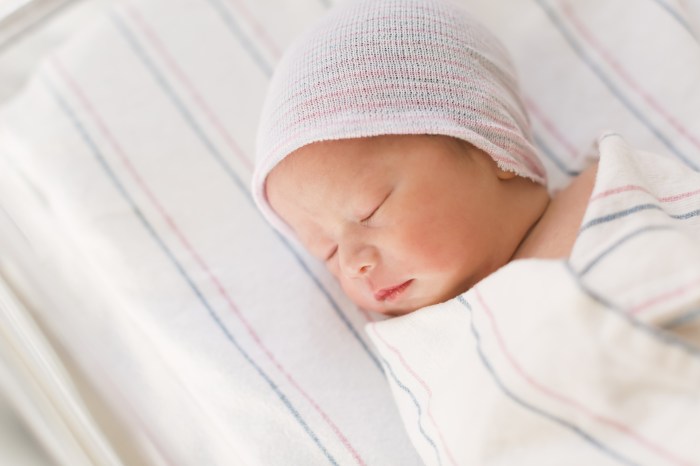Babies Born With Teeth: Unraveling the Enigma takes center stage, inviting you on an enlightening journey into a fascinating realm where newborns arrive with a unique dental adornment. This captivating exploration delves into the intriguing characteristics, management strategies, and cultural significance surrounding these extraordinary infants.
From understanding the types and causes of natal teeth to examining the potential risks and complications associated with them, this discourse unveils a comprehensive understanding of this captivating phenomenon. Dive into case studies that showcase the unique challenges and management strategies employed, while also exploring the cultural and historical perspectives that have shaped our understanding of babies born with teeth.
Characteristics of Babies Born with Teeth
Babies born with teeth, also known as natal teeth, are a relatively uncommon occurrence. They are present in approximately 1 in every 2,000 to 3,000 live births. These teeth can appear as early as birth or within the first few months of life.
Types of Natal Teeth
There are two main types of natal teeth:
- True natal teeth:These teeth are fully formed and erupted through the gums at birth. They are usually incisors or canines and are often loose and wobbly.
- Natal buds:These are small, white or yellowish bumps on the gums that represent the early stages of tooth development. They may or may not erupt into teeth later on.
Causes of Natal Teeth
The exact cause of natal teeth is unknown, but several factors are believed to contribute, including:
- Genetics:Natal teeth may run in families, suggesting a genetic component.
- Hormonal factors:High levels of certain hormones during pregnancy may stimulate early tooth development.
- Environmental factors:Exposure to certain environmental toxins or medications during pregnancy may also increase the risk of natal teeth.
Risks and Complications
While natal teeth are generally not a cause for concern, they can sometimes pose certain risks and complications, such as:
- Trauma to the mother during birth:Sharp natal teeth can cause lacerations or injuries to the mother’s birth canal during delivery.
- Trauma to the baby’s tongue or gums:Natal teeth can rub against the baby’s tongue or gums, causing irritation or pain.
- Feeding difficulties:Loose or wobbly natal teeth can interfere with breastfeeding or bottle-feeding.
- Infection:If natal teeth are not properly cleaned, they can become infected.
In most cases, natal teeth are harmless and do not require treatment. However, if they are causing any problems, such as pain or feeding difficulties, a dentist may recommend removing them.
Management of Natal Teeth

Natal teeth require careful management to prevent potential complications and ensure the child’s well-being. The treatment options available depend on various factors, including the location, stability, and symptoms associated with the teeth.
Removal of Natal Teeth
- Extraction:In cases where the natal tooth is loose or causing discomfort, extraction may be recommended. This is a relatively simple procedure performed under local anesthesia, involving the removal of the tooth with forceps.
- Surgical Removal:For deeply embedded or impacted natal teeth, surgical removal may be necessary. This is a more complex procedure requiring a surgical incision and bone removal to access the tooth.
Preservation of Natal Teeth
In some cases, it may be possible to preserve the natal teeth if they are stable and not causing any problems. This involves monitoring the teeth for any changes or symptoms, and providing regular dental care to maintain their health.
Factors to Consider When Making Treatment Decisions, Babies Born With Teeth
- Location:The location of the natal tooth can influence the treatment options. Teeth located near the front of the mouth are more likely to be extracted due to aesthetic concerns, while those located further back may be preserved.
- Stability:Loose or mobile natal teeth may require extraction to prevent accidental ingestion or aspiration.
- Symptoms:If the natal tooth is causing discomfort, pain, or feeding difficulties, extraction may be necessary to alleviate these symptoms.
- Future Dentition:The potential impact of the natal tooth on the development of the permanent teeth should be considered. In some cases, the natal tooth may need to be removed to prevent crowding or misalignment of the permanent teeth.
Case Studies and Clinical Examples

Case studies of babies born with teeth provide valuable insights into the unique challenges and management strategies associated with this condition. These case studies highlight the diverse presentations, complications, and treatment approaches.
Clinical Photographs and Illustrations
Clinical photographs and illustrations play a crucial role in demonstrating the different types of natal teeth. These visual aids help in understanding the size, shape, and location of these teeth, facilitating accurate diagnosis and appropriate management.
Babies born with teeth, a rare occurrence, can be a surprise to parents. These teeth, known as natal teeth, are usually loose and may need to be removed to prevent choking. However, in some cases, they may be securely attached and require no intervention.
Like Collector Ticket Meaning , which refers to a ticket issued to someone who collects tickets, natal teeth can be a unique and unexpected experience. While natal teeth are often harmless, it’s important to consult a healthcare professional to ensure the baby’s safety and well-being.
Table of Case Studies
The following table presents a summary of case studies involving babies born with teeth, showcasing the variations in clinical presentation and management strategies:
| Case | Age at Birth | Number of Teeth | Type of Teeth | Management | Outcome |
|---|---|---|---|---|---|
| 1 | 2 days | 2 | Central incisors | Extraction due to feeding difficulties | Successful feeding and normal development |
| 2 | 1 week | 4 | Central and lateral incisors | Observation and monitoring | Teeth exfoliated without complications |
| 3 | 3 weeks | 1 | Maxillary molar | Surgical removal due to impaction | Prevention of infection and normal growth |
| 4 | 6 weeks | 6 | Central incisors, lateral incisors, and canines | Orthodontic intervention to align teeth | Improved dental alignment and function |
Cultural and Historical Perspectives
The birth of a baby with teeth has long been a source of fascination and intrigue across cultures and historical periods. These “natal teeth,” as they are known, have been attributed with both positive and negative connotations, leading to a diverse array of beliefs and practices associated with them.
Folklore and Superstitions
- In many cultures, natal teeth are seen as a sign of good fortune and prosperity for the child and their family. In some parts of Europe, it is believed that a baby born with teeth will grow up to be a wealthy and successful individual.
- Conversely, in other cultures, natal teeth are associated with misfortune or even witchcraft. In some African traditions, it is believed that a baby born with teeth is a “witch child” and may bring bad luck to the community.
- In some parts of Asia, natal teeth are thought to be a sign that the child will have a strong and independent personality.
Historical Accounts
Historical accounts of babies born with teeth can be found in various cultures and time periods.
- In ancient Greece, the philosopher Aristotle wrote about a child who was born with a full set of teeth, which he believed to be a sign of great intelligence and strength.
- In the Middle Ages, it was believed that babies born with teeth were destined to become great leaders or warriors.
- In the 19th century, a baby born with teeth in England was exhibited as a curiosity and became known as the “Tooth Baby.”
Research and Future Directions

Research on babies born with teeth is still in its early stages. However, several studies have been conducted to better understand the causes and management of natal teeth.
One area of research has focused on identifying the genetic and environmental factors that contribute to the development of natal teeth. Studies have shown that certain genetic mutations can increase the risk of a baby being born with teeth. Additionally, certain environmental factors, such as maternal smoking and alcohol consumption, have also been linked to an increased risk of natal teeth.
Babies born with teeth, a rare occurrence, can be a surprise to new parents. While not always a cause for concern, it’s essential to ensure the baby’s safety. Under The Occupational Health And Safety Act Employees Must take appropriate precautions to protect themselves and others from potential hazards.
This includes ensuring that the baby’s teeth are not sharp enough to cause injury.
Future Research Directions
Further research is needed to better understand the causes and management of natal teeth. Some specific areas where further research is needed include:
- Identifying the specific genetic mutations that cause natal teeth.
- Determining the role of environmental factors in the development of natal teeth.
- Developing new and more effective methods for managing natal teeth.
- Conducting long-term studies to track the oral health outcomes of babies born with teeth.
Potential Future Directions
Potential future directions for research and clinical practice include:
- The development of genetic tests to identify babies at risk for natal teeth.
- The use of preventive measures to reduce the risk of natal teeth.
- The development of new and more effective treatments for natal teeth.
- The establishment of guidelines for the management of natal teeth.
Final Conclusion
As we conclude our exploration of Babies Born With Teeth, a captivating summary emerges. The discussion has illuminated the prevalence, causes, and management options for natal teeth, shedding light on their potential impact on infant health and well-being. Through the lens of cultural and historical perspectives, we have gained insights into the diverse beliefs and practices associated with these extraordinary newborns.
The future holds exciting prospects for research and clinical practice, as we strive to further unravel the mysteries surrounding babies born with teeth. Ongoing studies aim to enhance our understanding of the underlying causes and develop more effective management strategies.
By embracing a collaborative approach, we can continue to advance our knowledge and provide optimal care for these unique individuals.
FAQ Overview
What is the prevalence of babies born with teeth?
Approximately 1 in 2,000 to 3,000 newborns are born with teeth.
Are natal teeth harmful?
While natal teeth are generally harmless, they can sometimes cause discomfort, interfere with breastfeeding, or damage the mother’s nipples.
What are the treatment options for natal teeth?
Treatment options include observation, removal, or preservation, depending on the individual case and potential risks.
What is the cultural significance of babies born with teeth?
In some cultures, babies born with teeth are considered a sign of good luck or prosperity, while in others, they may be associated with superstition or folklore.